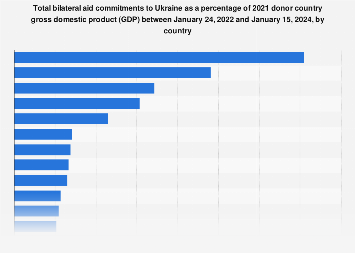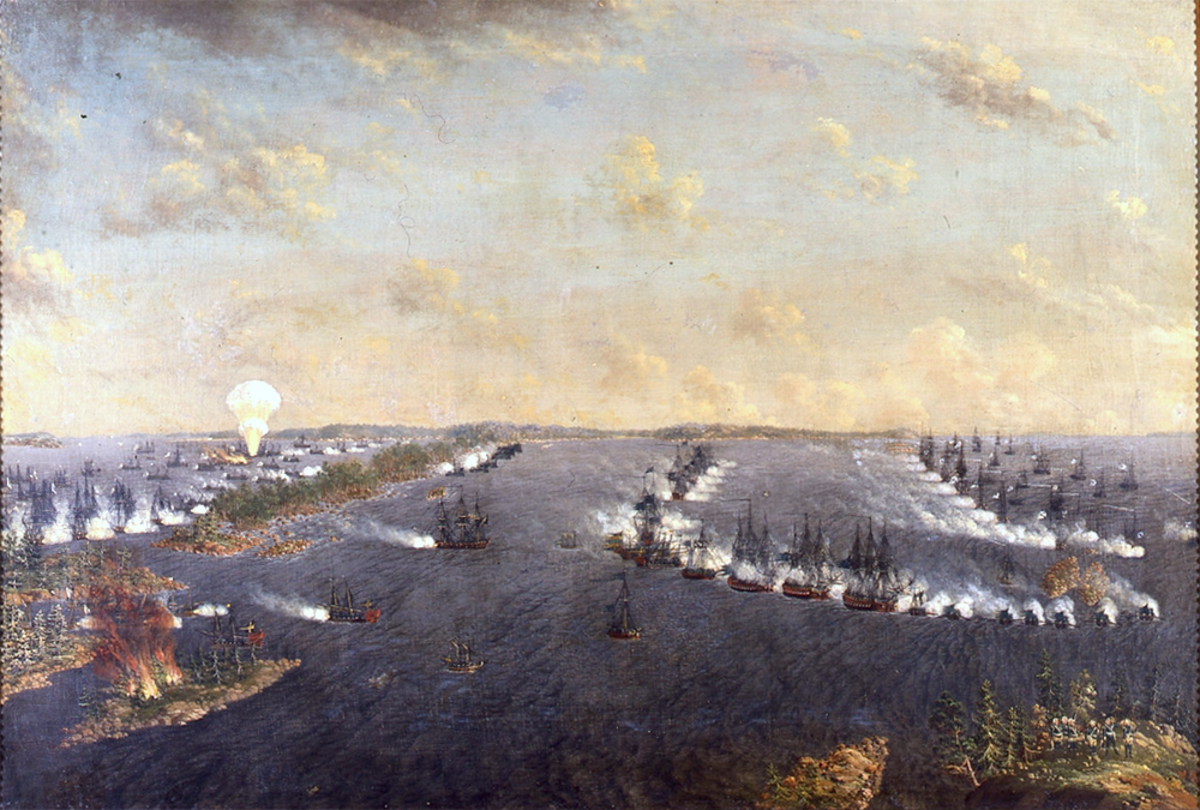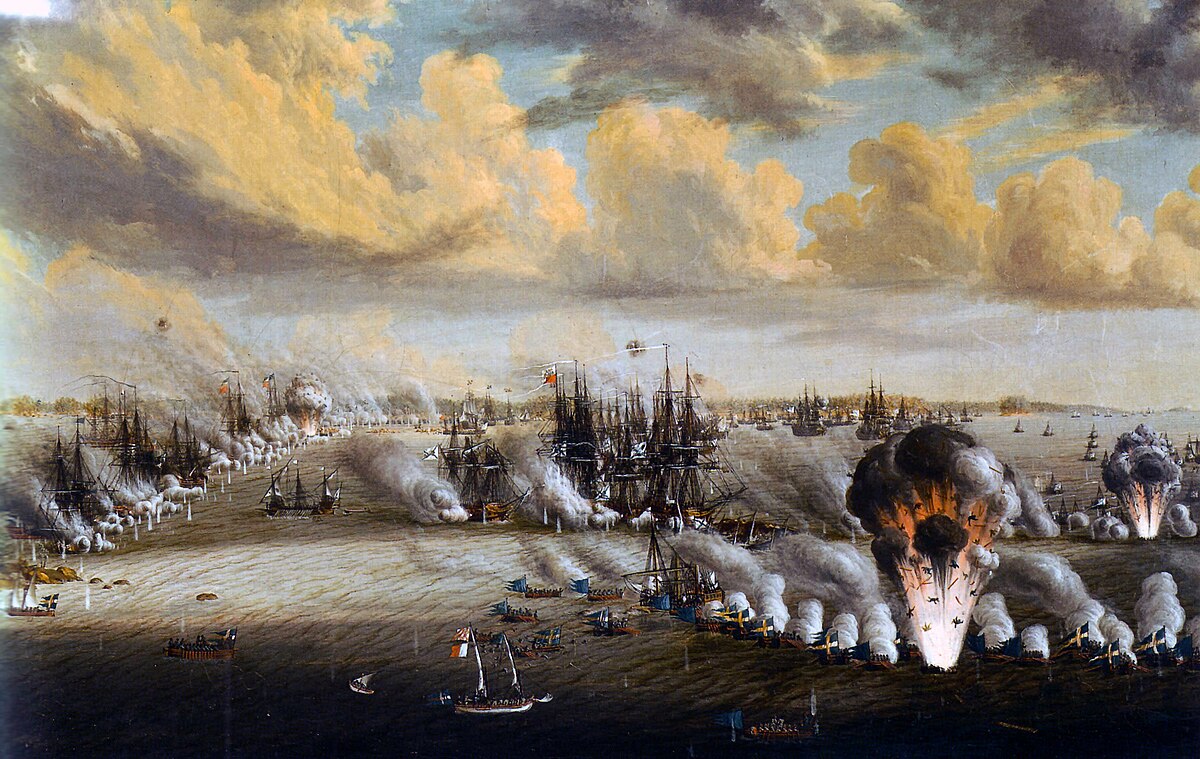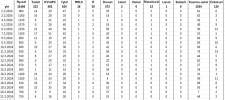Ja kun tuo ei ole edes varallisuudesta kiinni. Suomalaisella hotelliaamiaisella tungetaan (tungettiin, onneksi) taskut täyteen voinappeja, paperiliinoja ja muovilusikoita, kananmunia ja karjalanpiirakoita tungetaan kasseihin. Kaikki mitä linjastolla vaan on, otetaan tarjottimelle, kykeni sitä syömään tai ei.
Install the app
How to install the app on iOS
Follow along with the video below to see how to install our site as a web app on your home screen.
Note: This feature may not be available in some browsers.
You are using an out of date browser. It may not display this or other websites correctly.
You should upgrade or use an alternative browser.
You should upgrade or use an alternative browser.
Ukrainan konflikti/sota
Tälläkin elämän osa-alueella kannattaa enemmän katsoa mitä kädet tekee, eikä sitä mitä suu sanoo.

Bilateral aid to Ukraine by country GDP 2025| Statista
Denmark and Estonia had the highest ratio of bilateral support to Ukraine to donor GDP as of February 2025. Poland ranked eighth by GDP share of aid to Ukraine.www.statista.com
Vinkkinä että pitää painaa "expand statistics" nappia jotta häpeällisemmän pään ml. ranska lukuja alkaa näkyä. En mene takuuseen tilaston luotettavuudesta, eiköhän suuruusluokat käy ilmi.
Juu, enemmänkin kyse asenteesta ja kyvystä kestää myös pitkittynyt sota. Monilla alkaa into auttaa hiipua, vaikka koneeseen pitäisi lisätä kierroksia.
Antares
Respected Leader
Otetaanpa talteen tämä The Economist -artikkeli, joka on kirjoitettu yhteistyössä RUSI:n kanssa (artikkeli julkaistu 20.3.2024).
Varsinainen artikkeli on maksumuurin takana mutta sain mahdollisesti napattua sen tekstin eri lähteestä. Jos joku pystyy tarkistamaan ja kommentoimaan, niin se olisi tervetullutta.
Might Russia run out of big guns?
"Russia is expected to run out of barrels in 2025, says one informed analyst, at which point it will need to rely on rocket artillery, which requires far greater supplies of explosive material."
https://www.economist.com/the-economist-explains/2024/03/20/might-russia-run-out-of-big-guns
Varsinainen artikkeli on maksumuurin takana mutta sain mahdollisesti napattua sen tekstin eri lähteestä. Jos joku pystyy tarkistamaan ja kommentoimaan, niin se olisi tervetullutta.
Might Russia run out of big guns?
"Russia is expected to run out of barrels in 2025, says one informed analyst, at which point it will need to rely on rocket artillery, which requires far greater supplies of explosive material."
https://www.economist.com/the-economist-explains/2024/03/20/might-russia-run-out-of-big-guns
The Economist explains
Mar 20th 2024
Russian guns are firing around five times as many shells as Ukraine’s are. Fighting has intensified in recent weeks. On February 17th the invaders seized Avdiivka, a town on the eastern front. They have since taken several nearby villages. In the south Ukrainian soldiers are defending the village of Robotyne with just 20 to 30 shells a day. Russia’s firepower gives it a clear advantage—but does it have enough guns to keep it up?
In February Russia had just under 5,000 artillery pieces in the field, according to the Royal United Services Institute, a think-tank in London. It produces about 50 artillery-gun barrels a year, according to Pavel Luzin of the Centre for European Policy Analysis, a think-tank. Ramping up production would be difficult: gun barrels are made with specialist machinery using high-grade steel. At the outbreak of war only two Russian factories were equipped to make them. Few countries export gun barrels and fewer still would sell to Russia: North Korea is a possible source, having already supplied shells. But satellite images suggest that Russia is replacing a large share of the big guns it loses from a stock that is stored in the open air.
At the start of the conflict Russia had around 19,000 artillery pieces in unsheltered yards. But some of those guns have been rusting for decades, making them unusable. Many have been raided for parts over the past two years: gun barrels have frequently been used to replace those worn out by firing thousands of rounds. A study by one open-source intelligence (OSINT) analyst on X, who goes by Ben on the site, suggests on that basis that just 2,000 self-propelled guns and 2,400 towed artillery pieces could still be used.
Those figures are uncertain: it is hard to estimate how many of Russia’s oldest guns, D-1 and M-30 howitzers, which date back to the second world war, can still be used—or how much ammunition Russia has for them. But the dwindling supply of artillery, and of gun barrels in particular, is a clear problem.
It is hard to estimate the rate at which Ukraine is destroying Russian artillery: big guns are usually stationed far from the front lines, making them difficult to count. Ukraine’s armed forces claim to have destroyed more than 10,000, but the number which can be visually confirmed is far lower. Oryx, an OSINT analysis team in the Netherlands, whose estimates are often reasonably consistent with those of state agencies, has images of around 1,000. Based on the rate at which equipment is being withdrawn from the open-air stock, the OSINT analyst on X suggests that the Ukrainians have destroyed perhaps 5,500 big guns. Russia is expected to run out of barrels in 2025, says one informed analyst, at which point it will need to rely on rocket artillery, which requires far greater supplies of explosive material.
In the past year Ukraine has become much better at destroying Russian artillery (and vice versa). Its detection systems have improved: counter-battery radar supplied by its allies tracks Russian shells back to their source. A plentiful supply of small kamikaze drones, launched up to 20km from their target, can destroy Russian guns. The invaders could protect their artillery by moving it further back from the front lines, or withdrawing some pieces altogether. But that would hamper their ability to pummel the Ukrainians. For the defenders, that would provide welcome relief.
Might Russia run out of big guns?
Its armed forces may be out-shelling the Ukrainians—but they are wearing out their artillery
Mar 20th 2024
Russian guns are firing around five times as many shells as Ukraine’s are. Fighting has intensified in recent weeks. On February 17th the invaders seized Avdiivka, a town on the eastern front. They have since taken several nearby villages. In the south Ukrainian soldiers are defending the village of Robotyne with just 20 to 30 shells a day. Russia’s firepower gives it a clear advantage—but does it have enough guns to keep it up?
In February Russia had just under 5,000 artillery pieces in the field, according to the Royal United Services Institute, a think-tank in London. It produces about 50 artillery-gun barrels a year, according to Pavel Luzin of the Centre for European Policy Analysis, a think-tank. Ramping up production would be difficult: gun barrels are made with specialist machinery using high-grade steel. At the outbreak of war only two Russian factories were equipped to make them. Few countries export gun barrels and fewer still would sell to Russia: North Korea is a possible source, having already supplied shells. But satellite images suggest that Russia is replacing a large share of the big guns it loses from a stock that is stored in the open air.
At the start of the conflict Russia had around 19,000 artillery pieces in unsheltered yards. But some of those guns have been rusting for decades, making them unusable. Many have been raided for parts over the past two years: gun barrels have frequently been used to replace those worn out by firing thousands of rounds. A study by one open-source intelligence (OSINT) analyst on X, who goes by Ben on the site, suggests on that basis that just 2,000 self-propelled guns and 2,400 towed artillery pieces could still be used.
Those figures are uncertain: it is hard to estimate how many of Russia’s oldest guns, D-1 and M-30 howitzers, which date back to the second world war, can still be used—or how much ammunition Russia has for them. But the dwindling supply of artillery, and of gun barrels in particular, is a clear problem.
It is hard to estimate the rate at which Ukraine is destroying Russian artillery: big guns are usually stationed far from the front lines, making them difficult to count. Ukraine’s armed forces claim to have destroyed more than 10,000, but the number which can be visually confirmed is far lower. Oryx, an OSINT analysis team in the Netherlands, whose estimates are often reasonably consistent with those of state agencies, has images of around 1,000. Based on the rate at which equipment is being withdrawn from the open-air stock, the OSINT analyst on X suggests that the Ukrainians have destroyed perhaps 5,500 big guns. Russia is expected to run out of barrels in 2025, says one informed analyst, at which point it will need to rely on rocket artillery, which requires far greater supplies of explosive material.
In the past year Ukraine has become much better at destroying Russian artillery (and vice versa). Its detection systems have improved: counter-battery radar supplied by its allies tracks Russian shells back to their source. A plentiful supply of small kamikaze drones, launched up to 20km from their target, can destroy Russian guns. The invaders could protect their artillery by moving it further back from the front lines, or withdrawing some pieces altogether. But that would hamper their ability to pummel the Ukrainians. For the defenders, that would provide welcome relief.
ISW käyttää jonkin verran tilaa arveluihin, joiden mukaan ryssä varautuu sotaan NATOa vastaan.
Äkkiseltään luettuna arvelu perustuu erilaisiin puheisiin ja "merkkeihin" mitä täällä palstallakin on mainittu.
Tämä voisi teoriassa selittää myös miksi ryssä olisi ruvennut säästelemään pitkän matkan ohjuksia. NATOa vastaan noita tarvittaisiin tuhansia ja arsenaali ei kasva nykyisellä tuotannolla jos niitä Ukrainaan heitetään isommin määrin.
Toinen syy voisi olla se, että toivovat Ukrainan ilmatorjunnan horjuvan ja sortuvan torjuntaohjeiden puutteeseen jahka USA:n sisäpoliittinen vääntö yhä etenee.
Odottelussa olisi periaatteessa yhteistä hyötyä kumpaakin skenaariota ajatellen.
 www.understandingwar.org
www.understandingwar.org
Äkkiseltään luettuna arvelu perustuu erilaisiin puheisiin ja "merkkeihin" mitä täällä palstallakin on mainittu.
Tämä voisi teoriassa selittää myös miksi ryssä olisi ruvennut säästelemään pitkän matkan ohjuksia. NATOa vastaan noita tarvittaisiin tuhansia ja arsenaali ei kasva nykyisellä tuotannolla jos niitä Ukrainaan heitetään isommin määrin.
Toinen syy voisi olla se, että toivovat Ukrainan ilmatorjunnan horjuvan ja sortuvan torjuntaohjeiden puutteeseen jahka USA:n sisäpoliittinen vääntö yhä etenee.
Odottelussa olisi periaatteessa yhteistä hyötyä kumpaakin skenaariota ajatellen.
Institute for the Study of War
Several Russian financial, economic, and military indicators suggest that Russia is preparing for a large-scale conventional conflict with NATO, not imminently but likely on a shorter timeline than what some Western analysts have initially posited. The
Antares
Respected Leader
Kertauksen vuoksi, tässä se mitä Shoigu julisti eilen:
Here's Defense Minister Sergei Shoigu announcing the creation of 2 new ground armies, along with 16 new brigades and 14 new divisions. Very unclear where the new numbers will come from, though there are fears of a new, post-election mobilization.
http://t.me/WarDonbass
-
Dara Massicot kommentoi julistusta:
I want to add context to Russian announcements of new units. Shoigu has periodically announced these types of changes in peacetime and then not staffed them (like in 2016). This is wartime, so it’s different. Keep an eye on it, but don’t take it at face value.
A few thoughts
In 2016, Shoigu said 10 new divisions would be stood up, mostly IVO Ukraine. We tracked them. They were based on existing brigades, not new units. They didn’t add overall billets to the army (red flag). They were undermanned until fall 2021 when some received BARS personnel.
Shoigu said last year they would create a combined arms army for Ukraine, and they did that. But then they basically lost that unit’s equivalent equipment at Avdiivka over five months.
I believe they will try to make these units - yet I question their ability to give them equipment and man them in the next few years, due to past precedent**. Regenerating from scratch is well over 100K soldiers. Then they have to be equipped, when equipment goes to Ukraine.
***The low likelihood /high impact scenario is that they build out these units with another large mobilization in mind in 2025ish. That will not be a quiet process and right now it’s not happening. it’s worth checking assumptions and indicators periodically.
There is a difference between them saying they will create combined arms armies, divisions, brigades and increasing billets, and what doing what it will require: new or refurbished bases, with equipment sets; a bigger/extended draft, flawless postwar retention and recruiting.
Russia is planning on increasing the size of its force. They are moving in this direction. Skepticism of Russian claims— what are the real timelines, and identifying evidence suggesting they are executing this — would be wise to keep on board.
-
Minun kommentit: hän on oikeassa sen suhteen että on täysin eri asia julistaa uusia yksiköitä perustetuksi, kuin että ne on oikeasti miehitetty, varustettu, koulutettu ja viety Ukrainaan taistelemaan.
Toisaalta moni varmasti muistaa 3. armeijakunnan muodostamisen ja sen surkean kohtalon.
Samoin syksyn 2022 mobilisaatio, siinäkin ensimmäiset muutama kymmenen tuhatta lähetettiin käytännössä sellaisenaan Ukrainaan korvaamaan tappioita. Näiden jälkeen seuraaville annettiin jopa muutaman viikon tai noin kuukauden "kertaus", joka ei ollut häävi sekään. Silti, kaikesta huolimatta, suuri määrä kevyttä jalkaväkeä toimi ja riitti pysäyttämään Ukrainan etenemisen.
Ottaisin toiseksi esimerkiksi Putinin ja Medvedevin julistukset alkuvuonna 2023: molemmat höpisivät että "Venäjä tulee valmistamaan 1 500 tai 1 600 panssarivaunua vuonna 2023". Nähdäkseni tämä julistus toteutui kokoluokassaan, mutta tuo määrä sisälsi hyvin pienen määrän oikeaa uustuotantoa ja valtaosa numerosta oli varastotukikohdista kunnostettuja ja modernisoituja vaunuja sekä Ukrainasta palanneita, korjattuja vaunuja.
Eli tällaisia julkisia julistuksia on nähty ennenkin, joskus ne ovat pelkkää ilmaa mutta näin sota-aikana ottaisin tällaiset todesta: ne kertonevat ainakin tavoitteista ja aikomuksista. Kyetäänkö ne toteuttamaan JA millä aikataululla (vuonna 2024 vai meneekö osittain vuoden 2025 puolelle?), sitä ei voida tietää.
Here's Defense Minister Sergei Shoigu announcing the creation of 2 new ground armies, along with 16 new brigades and 14 new divisions. Very unclear where the new numbers will come from, though there are fears of a new, post-election mobilization.
http://t.me/WarDonbass
-
Dara Massicot kommentoi julistusta:
I want to add context to Russian announcements of new units. Shoigu has periodically announced these types of changes in peacetime and then not staffed them (like in 2016). This is wartime, so it’s different. Keep an eye on it, but don’t take it at face value.
A few thoughts
In 2016, Shoigu said 10 new divisions would be stood up, mostly IVO Ukraine. We tracked them. They were based on existing brigades, not new units. They didn’t add overall billets to the army (red flag). They were undermanned until fall 2021 when some received BARS personnel.
Shoigu said last year they would create a combined arms army for Ukraine, and they did that. But then they basically lost that unit’s equivalent equipment at Avdiivka over five months.
I believe they will try to make these units - yet I question their ability to give them equipment and man them in the next few years, due to past precedent**. Regenerating from scratch is well over 100K soldiers. Then they have to be equipped, when equipment goes to Ukraine.
***The low likelihood /high impact scenario is that they build out these units with another large mobilization in mind in 2025ish. That will not be a quiet process and right now it’s not happening. it’s worth checking assumptions and indicators periodically.
There is a difference between them saying they will create combined arms armies, divisions, brigades and increasing billets, and what doing what it will require: new or refurbished bases, with equipment sets; a bigger/extended draft, flawless postwar retention and recruiting.
Russia is planning on increasing the size of its force. They are moving in this direction. Skepticism of Russian claims— what are the real timelines, and identifying evidence suggesting they are executing this — would be wise to keep on board.
-
Minun kommentit: hän on oikeassa sen suhteen että on täysin eri asia julistaa uusia yksiköitä perustetuksi, kuin että ne on oikeasti miehitetty, varustettu, koulutettu ja viety Ukrainaan taistelemaan.
Toisaalta moni varmasti muistaa 3. armeijakunnan muodostamisen ja sen surkean kohtalon.
Samoin syksyn 2022 mobilisaatio, siinäkin ensimmäiset muutama kymmenen tuhatta lähetettiin käytännössä sellaisenaan Ukrainaan korvaamaan tappioita. Näiden jälkeen seuraaville annettiin jopa muutaman viikon tai noin kuukauden "kertaus", joka ei ollut häävi sekään. Silti, kaikesta huolimatta, suuri määrä kevyttä jalkaväkeä toimi ja riitti pysäyttämään Ukrainan etenemisen.
Ottaisin toiseksi esimerkiksi Putinin ja Medvedevin julistukset alkuvuonna 2023: molemmat höpisivät että "Venäjä tulee valmistamaan 1 500 tai 1 600 panssarivaunua vuonna 2023". Nähdäkseni tämä julistus toteutui kokoluokassaan, mutta tuo määrä sisälsi hyvin pienen määrän oikeaa uustuotantoa ja valtaosa numerosta oli varastotukikohdista kunnostettuja ja modernisoituja vaunuja sekä Ukrainasta palanneita, korjattuja vaunuja.
Eli tällaisia julkisia julistuksia on nähty ennenkin, joskus ne ovat pelkkää ilmaa mutta näin sota-aikana ottaisin tällaiset todesta: ne kertonevat ainakin tavoitteista ja aikomuksista. Kyetäänkö ne toteuttamaan JA millä aikataululla (vuonna 2024 vai meneekö osittain vuoden 2025 puolelle?), sitä ei voida tietää.
Viimeksi muokattu:
Mielenkiintonen tarina, miten sota voi vaikuttaa ihmisiin
No joo, jos mobilisaation ikärajan lasku 27->25v on yhtä ratkaisevaa kuten USAn asetuki, niin sitten on sama..
Mutta kun sekään ei onnistu. Pitäisi laskea sinne n. 20 v. Rahaa Ukraina saa ja on saamassa, tärkeämpää on nyt saada riittävästi taisteluvoimaa ryssää vastaan.
Ja jälleenrakennus tulee kyllä onnistumaan. Rahaa, resursseja ja ihmisiä siihen kyllä riittää. Monelta maalta enemmän, kuin nyt varsinaiseen sotimiseen.
Joko nuo ruåttalaiset alkoi heti sotimaan ryssän laivastoa vastaan kun pääsivät NATOn sateenkaaren suojaan? Alkoi itämerellä ryssän laivat samantien palaa? Voi Perrkkele, olisihan tuo pitänyt arvata että kun kuningaskunta päästetään irti niin itä-ruotti eli Suomi on saman tien kusessa… No, onhan tuosta ruottinsalmen ensimmäisestä taistelusta jäänyt pahemman kerran hampaankoloon. Ymmärtäähän tuon kyllä. Onneksi tuo jälkimmäinen sentään voitettiin. Eiköhän se tästä.Rysyt ovat osuneet harjoituksissa laivaan! Harmin paikka että sattui olemaan oma

Ruotsinsalmen ensimmäinen meritaistelu – Wikipedia

Ruotsinsalmen toinen meritaistelu – Wikipedia
lihapakaste
Luutnantti
Tänään mennyt tässä kuussa 1000 huollon kuorkkia, pulla-uazia, avolavaa ynnä muuta rikki!

edit: lisätty "tässä kuussa"

02.03.2024
03.03.2024
04.03.2024 https://twitter.com/DefenceU/status/1764529029120467141
05.03.2024 https://twitter.com/DefenceU/status/1764896108017234342
06.03.2024 https://twitter.com/DefenceU/status/1765252206448513300
07.03.2024 https://twitter.com/DefenceU/status/1765617821524853054
08.03.2024 https://twitter.com/DefenceU/status/1765985679429808195
09.03.2024 https://twitter.com/DefenceU/status/1766351464039952672
10.03.2024 https://twitter.com/DefenceU/status/1766703393899254027
11.03.2024 https://twitter.com/DefenceU/status/1767070088530661464
12.03.2024 https://twitter.com/DefenceU/status/1767427646726545481
13.03.2024 https://twitter.com/DefenceU/status/1767795989002301548
14.03.2024 https://twitter.com/DefenceU/status/1768156774798942381
15.03.2024 https://twitter.com/DefenceU/status/1768519378234941783
16.03.2024 https://twitter.com/DefenceU/status/1768881507974656259
17.03.2024 https://twitter.com/DefenceU/status/1769239449047531886
18.03.2024 https://twitter.com/DefenceU/status/1769605039469764886
19.03.2024 https://twitter.com/DefenceU/status/1769970132732768511
20.03.2024 https://twitter.com/DefenceU/status/1770333270493872521
21.03.2024 https://twitter.com/DefenceU/status/1770694876952178885
05.03.2024 https://twitter.com/DefenceU/status/1764896108017234342
06.03.2024 https://twitter.com/DefenceU/status/1765252206448513300
07.03.2024 https://twitter.com/DefenceU/status/1765617821524853054
08.03.2024 https://twitter.com/DefenceU/status/1765985679429808195
09.03.2024 https://twitter.com/DefenceU/status/1766351464039952672
10.03.2024 https://twitter.com/DefenceU/status/1766703393899254027
11.03.2024 https://twitter.com/DefenceU/status/1767070088530661464
12.03.2024 https://twitter.com/DefenceU/status/1767427646726545481
13.03.2024 https://twitter.com/DefenceU/status/1767795989002301548
14.03.2024 https://twitter.com/DefenceU/status/1768156774798942381
15.03.2024 https://twitter.com/DefenceU/status/1768519378234941783
16.03.2024 https://twitter.com/DefenceU/status/1768881507974656259
17.03.2024 https://twitter.com/DefenceU/status/1769239449047531886
18.03.2024 https://twitter.com/DefenceU/status/1769605039469764886
19.03.2024 https://twitter.com/DefenceU/status/1769970132732768511
20.03.2024 https://twitter.com/DefenceU/status/1770333270493872521
21.03.2024 https://twitter.com/DefenceU/status/1770694876952178885
edit: lisätty "tässä kuussa"
Vuoden Darwin palkinto menee tämän hyökkäyksen toteuttajalle. Täysillä päin asemia bemarilla, ja pakilla. Jumiin ja singosta kylkeen ja lisäpalkintona drone pudottaa kranun päälle.
Ei VI**U!!!Tieto lisää tuskaa.
allaolevan jälkeen, myös tietämättömyyskin lisää tuskaa (myös muille)

Toivottavasti noille Ukeille on varattu nyrkkeilysäkit tai jotain...
Mulla ei hermo kestäis kuulustella noita imbesillejä.

Korppi7
Luutnantti
Eikait siinä, kun keräävät ryssien irtoperseet rintamalta talteen ja heittää pakastimeen. Siinähän sitä on sitten spermapankkia aivan tarpeeksi.Khanty-Mansin alueen ihmisoikeuskomissaari haluaa aloittaa sotaan osallistuvien spermapankin sillä hänen mukaansa on tärkeää jatkaa sotilaiden sukua.
Puolikoominen kirjoitus ryssäbloggari Anastasia Kashevarovalta. Tämä on se samainen örkkinen, joka syksyllä 2022 nosti esiin pikamobilisaation surkeuksia.
Tässä tapauksessa valittelee että ryssän valtio ei tee mitään Belgorodin ja raja-alueen siviilien hyväksi, jotka ovat joutuneet monentyyppisiin vaikeuksiin. Tästä saa sen käsityksen, että Belgorodin talouselämä kärsii aika paljon tällä hetkellä tilanteesta.
Uskaltaa epäsuorasti epäillä että valtio ei välitä siviiliväestöstä. LOL
Tässä tapauksessa valittelee että ryssän valtio ei tee mitään Belgorodin ja raja-alueen siviilien hyväksi, jotka ovat joutuneet monentyyppisiin vaikeuksiin. Tästä saa sen käsityksen, että Belgorodin talouselämä kärsii aika paljon tällä hetkellä tilanteesta.
Uskaltaa epäsuorasti epäillä että valtio ei välitä siviiliväestöstä. LOL
missileman
Kenraali
On se siihen malliin tuo ryssien merisota mennyt, että tulosta on alettava tulla. Olisiko peräti painetta uudelta komentajalta. No suoritushan se on tuokin ja varmaan jollakin mitalilla porukan palkitsevatRysyt ovat osuneet harjoituksissa laivaan! Harmin paikka että sattui olemaan oma

Normihööki, joku lähti käpälämäkeen ja ehkä tuurilla pari selvisi omille linjoille. Ei siis vuoden Darvin palkintoa ryssän peruskauralle. Kyllä parempaan pitää pystyä.Vuoden Darwin palkinto menee tämän hyökkäyksen toteuttajalle. Täysillä päin asemia bemarilla, ja pakilla. Jumiin ja singosta kylkeen ja lisäpalkintona drone pudottaa kranun päälle.
Ihme ohjuksia ryssällä kun osuu aina siviiliin vaikka mihin tähtäisi.Rysyt ovat osuneet harjoituksissa laivaan! Harmin paikka että sattui olemaan oma
Tekisivät sellasen ohjuksen joka osuu sotilaskohteeseen, niin siitä vois olla jotain hyötyäkin. Vaikka sitä tosin varmaan yrittivätkin, mutta ryssivät sen.
tulikomento
Supreme Leader
Tämä YLE:n seurannasta.

 yle.fi
yle.fi
Ukrainan asevoimien komentaja Oleksandr Syrskyi sanoo ukrainalaisjoukkojen onnistuneen vakauttamaan Itä-Ukrainan rintaman tilanteen.
Syrskyi kirjoitta asiasta Telegram-kanavallaan, jossa hän kertoo keskustelleensa puhelimitse Ranskan asevoimien komentajan Thierry Burkhardin kanssa.
– (Puhelussa) kerroin tietoja tilanteesta taistelukentällä. Erityisesti siitä, että Ukrainan asevoimat on tällä hetkellä onnistunut vakauttamaan tilanteen Itä-Ukrainassa, Syrskyi kirjoittaa.
Stubb ja Rutte painottavat Ukrainan tuen jatkamista
Seuraamme tuoreimpia tietoja Venäjän hyökkäyksestä Ukrainaan tässä päivittyvässä jutussa.
Ukrainan asevoimien komentaja Oleksandr Syrskyi sanoo ukrainalaisjoukkojen onnistuneen vakauttamaan Itä-Ukrainan rintaman tilanteen.
Syrskyi kirjoitta asiasta Telegram-kanavallaan, jossa hän kertoo keskustelleensa puhelimitse Ranskan asevoimien komentajan Thierry Burkhardin kanssa.
– (Puhelussa) kerroin tietoja tilanteesta taistelukentällä. Erityisesti siitä, että Ukrainan asevoimat on tällä hetkellä onnistunut vakauttamaan tilanteen Itä-Ukrainassa, Syrskyi kirjoittaa.
ryssä tiedottaa:
Captain Lobanov ei uponnut, pojat vain tupakalla
(pelastuslautta kyllä upposi...)

Captain Lobanov ei uponnut, pojat vain tupakalla
(pelastuslautta kyllä upposi...)

se ryssän soldaatti, joka istui vesikuopan rannalla... varmaan kiroili, että nyt vasta löytyi kunnon piilo droneilta etc....
Yllätys visiitillä Ukrainassa:
Jake Sullivan ilmaisi luottamuksensa siihen, että kongressi äänestää 60 miljardin dollarin avun puolesta Ukrainalle. "Mutta meidän näkökulmastamme olemme varmoja, että saamme tämän tehtyä.

Anton Gerashchenko
Jake Sullivan Kiovassa: Ukraina saa apua USA:lta Yhdysvaltain kansallisen turvallisuuden neuvonantaja Jake Sullivan saapui Ukrainaan ennalta ilmoittamattomalle vierailulle. Erityisesti Jake Sullivan ilmaisi luottamuksensa siihen, että kongressi äänestää 60 miljardin dollarin avun puolesta Ukrainalle. "Mutta meidän näkökulmastamme olemme varmoja, että saamme tämän tehtyä. Saamme tämän avun Ukrainalle. Ja sillä välin emme vain odota. Juuri viime viikolla julkistimme Valkoisen talon korokkeelta 300 miljoonan dollarin paketin. ammuksia, ilmapuolustusta ja muita tärkeitä tarvikkeita, joita tarvitaan juuri nyt etulinjoilla, ja kiirehdimme näitä tarvikkeita sinulle puhuessamme. Joten teemme kaikkemme tukeaksemme sinua ja ponnistelujasi. Ja me työskentelemme myös muun maailman kanssa, yli 50 maan liittouman kanssa, joka seisoo vahvasti Ukrainan tukena", hän sanoi. Jake Sullivanin mukaan Yhdysvallat työskentelee myös koko maailman - yli 50 maan liittouman - kanssa tukeakseen edelleen Ukrainaa.
edit: lisätty alkuun Yllätys visiitillä Ukrainassa:
Jake Sullivan ilmaisi luottamuksensa siihen, että kongressi äänestää 60 miljardin dollarin avun puolesta Ukrainalle. "Mutta meidän näkökulmastamme olemme varmoja, että saamme tämän tehtyä.

Anton Gerashchenko
Jake Sullivan Kiovassa: Ukraina saa apua USA:lta Yhdysvaltain kansallisen turvallisuuden neuvonantaja Jake Sullivan saapui Ukrainaan ennalta ilmoittamattomalle vierailulle. Erityisesti Jake Sullivan ilmaisi luottamuksensa siihen, että kongressi äänestää 60 miljardin dollarin avun puolesta Ukrainalle. "Mutta meidän näkökulmastamme olemme varmoja, että saamme tämän tehtyä. Saamme tämän avun Ukrainalle. Ja sillä välin emme vain odota. Juuri viime viikolla julkistimme Valkoisen talon korokkeelta 300 miljoonan dollarin paketin. ammuksia, ilmapuolustusta ja muita tärkeitä tarvikkeita, joita tarvitaan juuri nyt etulinjoilla, ja kiirehdimme näitä tarvikkeita sinulle puhuessamme. Joten teemme kaikkemme tukeaksemme sinua ja ponnistelujasi. Ja me työskentelemme myös muun maailman kanssa, yli 50 maan liittouman kanssa, joka seisoo vahvasti Ukrainan tukena", hän sanoi. Jake Sullivanin mukaan Yhdysvallat työskentelee myös koko maailman - yli 50 maan liittouman - kanssa tukeakseen edelleen Ukrainaa.
edit: lisätty alkuun Yllätys visiitillä Ukrainassa:


